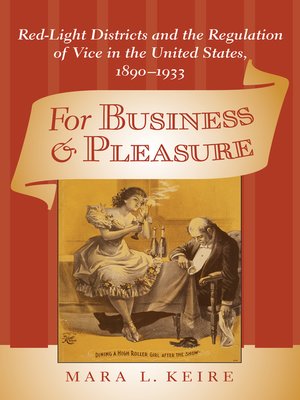For Business and Pleasure
ebook ∣ Red-Light Districts and the Regulation of Vice in the United States, 1890–1933 · Studies in Industry and Society
By Mara Laura Keire

Sign up to save your library
With an OverDrive account, you can save your favorite libraries for at-a-glance information about availability. Find out more about OverDrive accounts.
Find this title in Libby, the library reading app by OverDrive.



Search for a digital library with this title
Title found at these libraries:
| Library Name | Distance |
|---|---|
| Loading... |
Mara L. Keire's history of red-light districts in the United States offers readers a fascinating survey of the business of pleasure from the 1890s through the repeal of Prohibition in 1933.
Anti-vice reformers in the late nineteenth century accepted that complete eradication of disreputable pleasure was impossible. Seeking a way to regulate rather than eliminate prostitution, alcohol, drugs, and gambling, urban reformers confined sites of disreputable pleasure to red-light districts in cities throughout the United States. They dismissed the extremes of prohibitory law and instead sought to limit the impact of vice on city life through realistic restrictive measures.
Keire's thoughtful work examines the popular culture that developed within red-light districts, as well as efforts to contain vice in such cities as New Orleans; Hartford, Connecticut; New York City; Macon, Georgia; San Francisco; and El Paso, Texas. Keire describes the people and practices in red-light districts, reformers' efforts to limit their impact on city life, and the successful closure of the districts during World War I. Her study extends into Prohibition and discusses the various effects that scattering vice and banning alcohol had on commercial nightlife.







